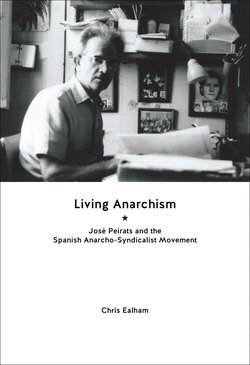Читать книгу Living Anarchism - Chris Ealham - Страница 9
На сайте Литреса книга снята с продажи.
Chapter Four: The revolutionary writer (1934–36)
ОглавлениеIn his mid-twenties, Peirats established himself as a revolutionary writer, closely resembling Antonio Gramsci’s notion of the proletarian ‘organic intellectual’.1 Both Peirats and Gramsci stressed the role of education in founding a counter-hegemonic revolutionary consciousness – an alternative culture that, in order to flourish, had to be rooted in everyday life. While Gramsci conceded that some ‘organic intellectuals’ might be middle-class renegades, he held in higher esteem worker-intellectuals of the kind typified by Peirats, since they could play a key role in the creation of class-based movements, the sine qua non for revolutionary transformation. Peirats typified the movement’s intellectuals who emerged from the proletarian ranks of anarcho-syndicalism. It is striking that middle-class intellectuals attracted to the libertarian camp, like Urales and Montseny, were hostile to syndicalism and, as we have already seen, periodically found themselves at odds with key sectors of the overwhelmingly proletarian CNT. In contrast, Peirats and those of his ilk were worker-autodidacts who, inevitably, had an intimate understanding of the conditions shaping the lives of other workers.
For Peirats, writing was a struggle in itself. Unlike professional propagandists like Urales, who lived and, indeed, prospered, from their publishing endeavours, Peirats not only had to overcome the cultural deficit imposed on him from birth but he frequently combined writing with manual labour. On the occasions that his words were remunerated, he received the wage of a semi-skilled labourer. Also in contrast to Urales, Peirats’s writing was intimately linked to his activism, and his emergence as a publicist did not mark the end of his phase as a ‘man of action’, even if it inevitably meant he spent less time engaged in some of the clandestine activities described earlier.
His first writings were both tentative and ambitious and reflected the quest of a young man searching for his place in the world and within the movement. Following his first published article in 1928, in El Boletín del Ladrillero, at the start of the 1930s he penned two short plays, which reflected his fascination with theatre and its communicative value: the unpublished Violín de Ingres and Revivir, which appeared in 1932.2 Unsurprisingly, given the intense internal debates within the anarchist movement at this time, his activist writings were destined to take precedence, as we saw with Glosas anárquicas.3 By the end of 1933, writing in his free time, Peirats was a regular contributor to the movement’s most important publications, such as Tierra y Libertad (the FAI weekly and Spain’s most important anarchist newspaper), La Revista Blanca, Acracia, and Ética. He also wrote for the CNT press, including the influential daily Solidaridad Obrera (commonly known as La Soli). In an attempt to evade unwanted police attention, most of these articles appeared under the penname ‘Jazmín’. He also frequently used the pseudonym ‘Afinidad’, the name of his affinity group, which points to his readiness to submerge his own identity within that of a collective unit.
